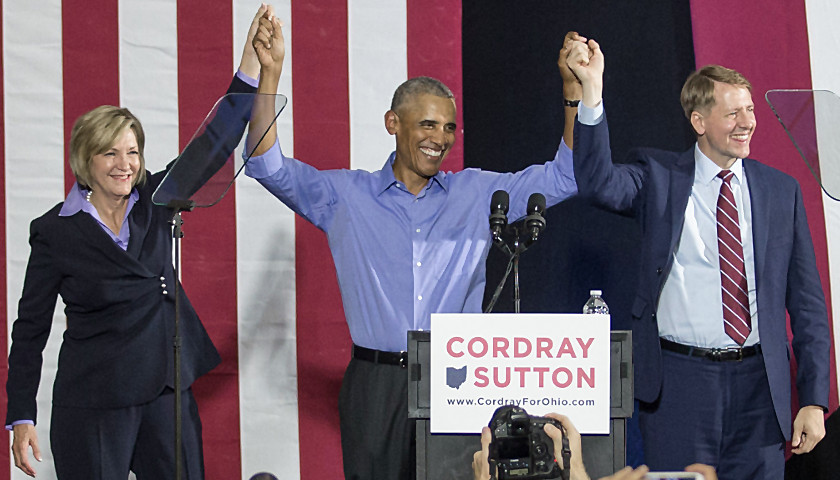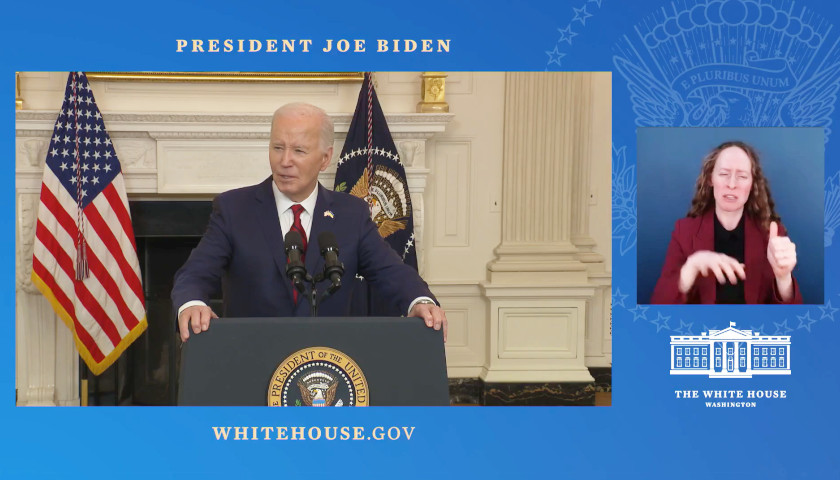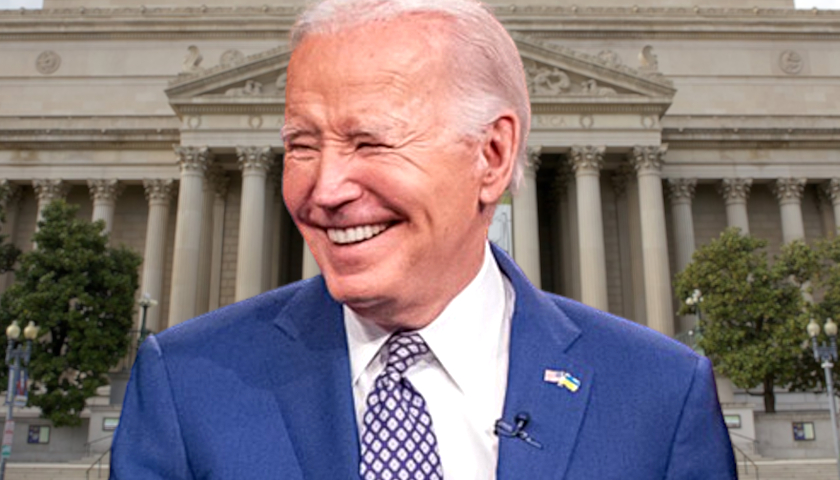Richard Cordray has promised the world to Ohio voters, but how much would it all cost?
The Democrat candidate for governor has proposed billions of dollars in new spending programs. Nobody argues that.
But how to pay for these programs, that’s where it gets opaque. His initiatives include expanded drug treatment, expanded welfare for the poor, expanded Medicaid, channeling more state aid to local governments, welcoming policies for illegal immigrants in need of extensive government services, expanded tuition coverage for students, and an expansive infrastructure program.
Back in May Cordray said he would use a mix of higher taxes and delving into the state’s reserves to pay for his programs. In late September, with Election Day drawing near, he switched gears and told the Columbus Dispatch he wouldn’t raise taxes but still planned to tap into the state’s rainy day fund.
From a rough tally based on his platform and public speeches, the proposals he has offered would cost Ohio taxpayers $4 billion in next year’s state budget. This would require a 46 percent increase in Ohio’s personal income taxes.
Cordray, in return for an endorsement from the Cuyahoga County Progressive Caucus, promised that his first priority in office would be to “flip” all of the economic policies that Ohio Republicans have implemented since 2011 — including the $5 billion in tax cuts that Republicans have passed for every Ohioan.
What new taxes could a Cordray administration be expected to employ? For starters, he has expressed a desire to bring back the estate tax, which was hurting family farms and small businesses.
Cordray, speaking on Tax Day, April 17, to a group of union leaders and city/county officials, slammed what he called Republicans’ “mania” for cutting taxes — including the repeal of Ohio’s estate tax in 2013 — which he said has left local governments unable to provide basic services to their poorest residents, Talking Points Memo reported.
He has also promised that he will veto any budget cut or tax cut the legislature passes.
As governor, I promise to work with you all. I won’t try to make the state look good at your expense,” he vowed. And if the legislature continues down its current path of tax and budget cuts, he added sternly, “there will be vetoes.”
BOTTOM LINE: Ohio’s economy is finally growing again under the leadership of fiscal conservatives. Voters will decide whether to continue in the same direction, or turn over their state’s economy to the tax-and-spend policies of the political left.
| Cost of Cordray | |
| Proposed Program | Estimated Cost (one fiscal year) |
| Universal Pre-K | $1,838,000,000 |
| Eliminate Caps in the School Funding Formula | $783,889,391 |
| Direct State Funding for Charter Schools & Vouchers | $880,570,657 |
| “Free” Community College | $60,000,000 |
| Restore Local Govt Fund | $450,000,000 |
| Annual Debt Service on $1.8B Infrastructure Bonds | $50,000,000 |
| Total | $4,062,460,048 |
| Multiplied by four Fiscal Years in Term | $16,249,840,192 |
| State “Rainy Day” Fund Balance | $2,691,554,191 |
| Personal Income Tax Revenue FY 2018 | $8,777,200,000 |
| Percentage increase Cordray would need | 46.28% |





